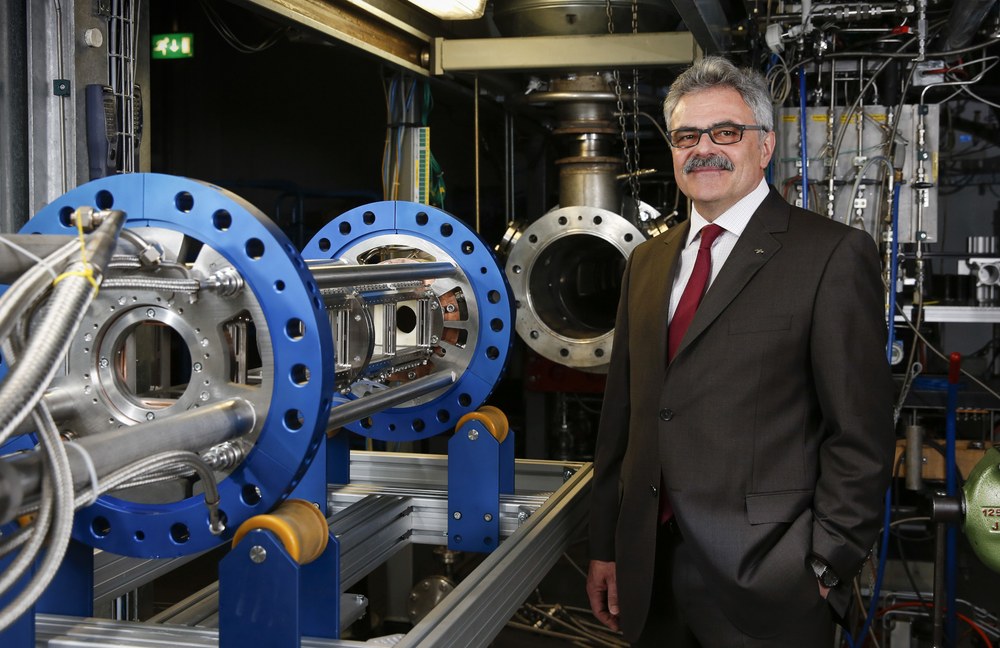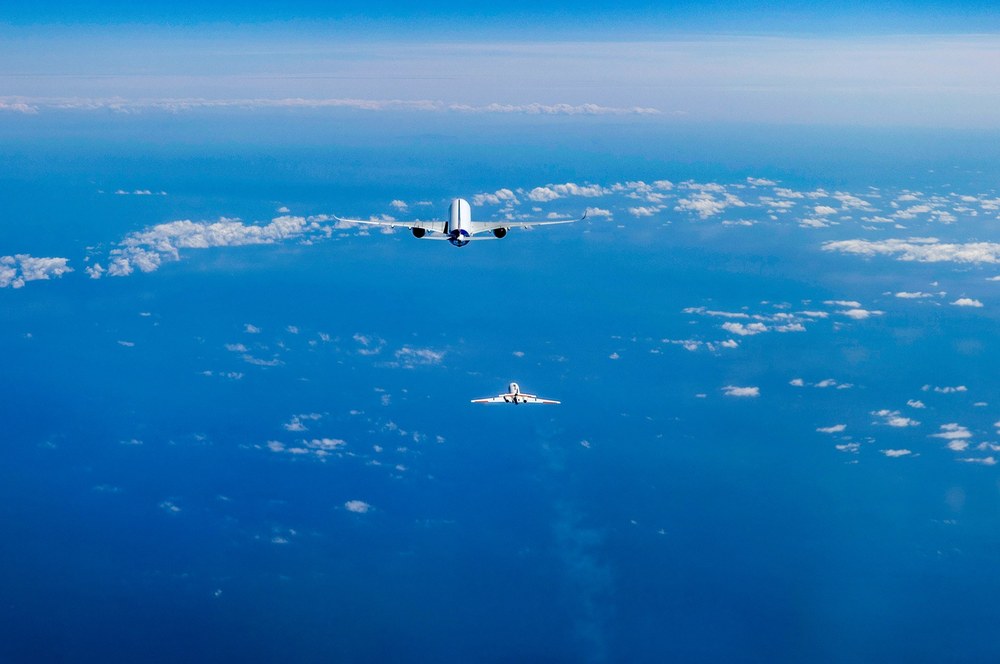Electrofuels – the time is right

©DLR/FrankEppler
- Electricity-based fuels are an absolute necessity for reducing carbon dioxide emissions and achieving ambitious climate protection targets.
- These liquid fuels are produced using green hydrogen and carbon from the air.
- In this interview, DLR expert Manfred Aigner describes what development steps are still required to produce electricity-based fuels on an industrial scale.
- Focus: Air transport, energy, zero-emission flight, hydrogen, energy storage, climate change, future mobility
DLR proposes development platform for Power-to-Liquid fuels (PtLs)
Along with alternative propulsion systems and other optimisations, electricity-based fuels (e-fuels) are necessary in order to achieve ambitious climate protection goals in road and maritime transport. There is simply no alternative to them in air transport, particularly for long-haul routes. Germany is aiming to reduce its carbon emissions by 65 percent before 2030 and achieve climate neutrality by 2045. In this interview, Manfred Aigner, long-standing Director of the German Aerospace Center (Deutsches Zentrum für Luft- und Raumfahrt; DLR) Institute of Combustion Technology and an expert in alternative fuels, describes what e-fuels are, the opportunities they offer and what steps need to be taken to make this technology suitable for industrial use and large-scale production.
What are electrofuels and why are they a good idea?
Manfred Aigner: Electricity-based fuels – also known as e-fuels or PtLs – are liquid fuels. These are produced using carbon from the atmosphere and hydrogen generated by means of electrolysis using electricity from renewable resources. In the future, many areas of mobility, particularly air transport, will be dependent on large quantities of liquid energy sources. That is why we need e-fuels to make mobility more sustainable and achieve ambitious climate protection targets.
Going forward, Germany will still have to import a significant proportion of its energy. E-fuels are ideal for this, as they can be transported and distributed over long distances and with only minor changes to the existing infrastructure. They are good news for both the climate and the environment, as their chemical composition can be optimised to, for example, create no fine particulates during the combustion process.
Where can e-fuels be used?
Aigner: In mobility, particularly in the air transport sector, but also in shipping and for heavy vehicles that have to cover long distances. E-fuels are also suitable as a reliable back-up option for power and heat supply in the event of a lengthy period during which little to no electricity can be generated with the use of wind and solar power.
Another advantage of using e-fuels is that we can usually use the existing infrastructure, vehicles and aircraft for transporting, distributing and storing them. E-fuels make sense in the automotive sector, too. Almost 50 million cars are currently registered in Germany, and it will take decades for the entire passenger car fleet to convert to battery- or fuel-cell-powered vehicles. If we are to achieve the climate targets by the deadline, we need both – e-fuels and alternative propulsion systems.
What are the disadvantages of e-fuels?
Aigner: The most significant downside is the cost. E-fuels will always remain more expensive to produce than fossil fuels. Regulatory measures such as a carbon dioxide tax can at least partially offset the additional costs of e-fuels. There is potential for a lot of efficiency gains to be made during production, too. Larger, better plants will also help to make production more cost-effective and thus reduce the price of e-fuels.
How far has the technology advanced?
Aigner: Scientists have been engaged in research and development on e-fuels for a number of years. A variety of technologies and e-fuels have proven their viability in the laboratory. Many of the components are now quite well advanced. The world's largest plant is currently in Werlte in Lower Saxony. It has a capacity of approximately 350 tonnes per year and produces a synthetic crude oil. However, the final step of producing a usable fuel from this has not yet been taken.
Generally speaking, the carbon required for e-fuels can also come from biomass. Further progress has been made in this area, with around 10 million tonnes of biofuels produced every year. However, biomass alone will not be sufficient as a source of carbon. It is also worth noting that the cultivation of biomass for fuel must not compete with food production.
What is the next step to be taken?
Aigner: The next important step is to transfer the processes from the laboratory to an industrial scale, by building demonstration and pilot plants. These systems are needed to ramp up production, because processes that work on a small scale cannot necessarily be scaled up exactly as they are. We now have to put all this in place very quickly; otherwise we will not be able to produce e-fuels efficiently and on a large scale by 2030, so that they can make their contribution towards achieving the climate targets.
In the air transport sector, we also have to develop e-fuels that can be used without mixing them with conventional fuels. At the moment, they are limited to 50 percent. This would not only save larger amounts of carbon dioxide, but also significantly reduce the non-carbon-dioxide effects of air transport on the climate. As things stand, these non-carbon-dioxide effects are at least as damaging as the climate impact of the emitted carbon dioxide. Using 100 percent e-fuels would make air transport largely climate-neutral.
What expertise does DLR have in the area of e-fuels?
Aigner: By creating a development platform for PtLs, DLR has created a concept for the comprehensive testing and further development of the entire production process for e-fuels in conjunction with partners from research and industry. This covers everything from renewable energy sources to the certification and use of these fuels. DLR has extensive expertise and experience across the entire process chain, so it has a head start. Its expertise ranges from fuel design – developing fuels with maximum performance and minimal climate impact – to investigating the technologies and economic viability, developing production paths, integrating the technologies into the overall energy system, and assessing certifiability, application and emission measurements, for example with the help of special DLR research aircraft. DLR can advise those making business decisions and formulating policy on technology options, technical performance and environmental impact. This allows us to showcase the use of e-fuels on a large scale and contribute towards protecting the climate and the environment.


